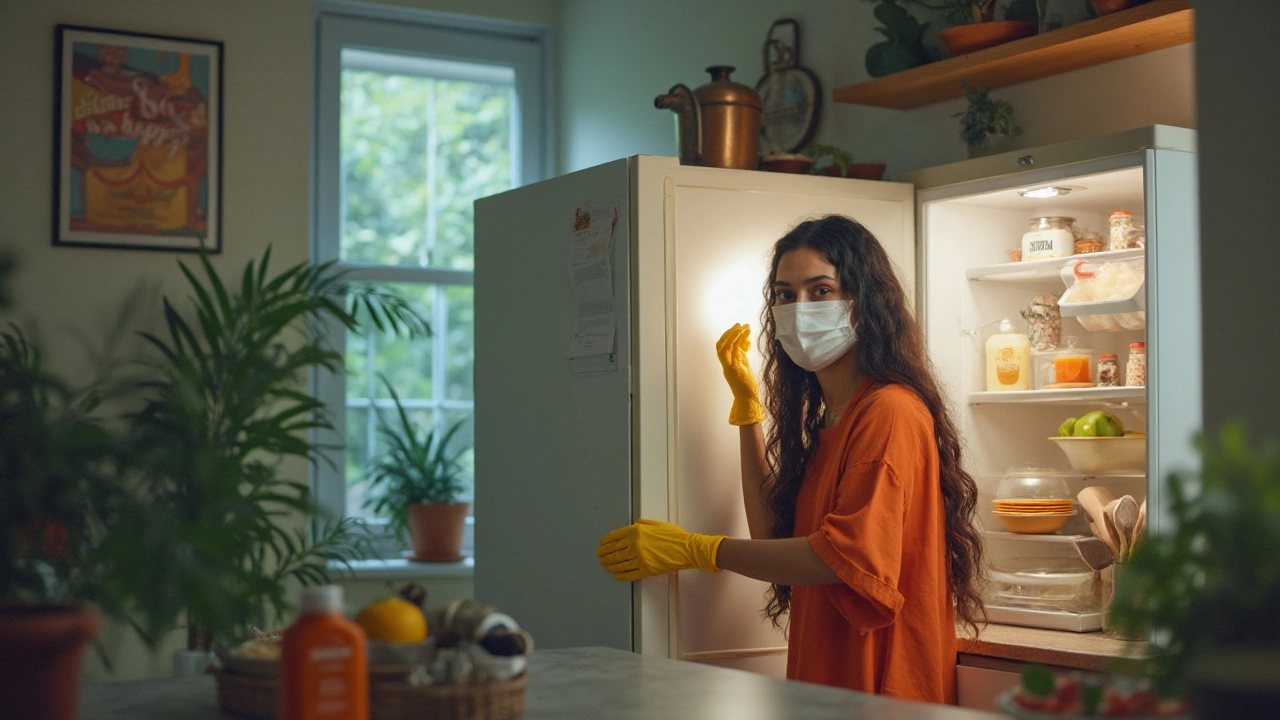When it comes to new buildings, the sight of shiny fixtures and modern designs can easily distract from potential hidden dangers, such as mold. While this unwelcome guest is often associated with older, damp homes, mold can also plague brand-new buildings. This happens due to moisture trapped during construction or inadequate ventilation practices.
Understanding the potential health risks posed by mold is crucial for those living or working in modern constructions. Mold spores can lead to various health issues, especially for individuals with allergies or weakened immune systems. By recognizing the signs of mold, you can take steps to protect yourself and address any problems before they escalate.
Fortunately, staying informed about mold detection and prevention can make a significant difference. In the following sections, we will delve into how mold develops, its impact on health, and the best ways to keep your environment safe from these persistent intruders.
- How Mold Develops in New Buildings
- Health Risks of Mold Exposure
- Detecting Mold in Your Home
- Preventative Measures and Solutions
How Mold Develops in New Buildings
It may seem odd to think about mold in brand-new buildings, but this is a reality that's taking hold more often than we'd like to admit. Let's dive into how this process unfolds and why even modern constructs are not immune from this persistent problem. New constructions often face their own unique set of challenges when it comes to mold, many of which stem from the very process of building itself. This includes the usage of materials that can retain moisture, such as drywall, which creates perfect breeding grounds for mold spores.
But how exactly does this happen? It often starts during the construction phase when buildings are exposed to elements like rain and humidity before the roofs or proper barriers are in place. This can trap moisture inside the walls and other building materials, setting up the perfect conditions for mold growth. Even the drive to build quickly and efficiently can backfire, as speed may result in less attention to the crucial details that prevent mold.
Another contributing factor is modern energy-efficient building techniques. While these methods aim to make homes more airtight to save on energy, they can inadvertently encourage mold by reducing ventilation, making moisture accumulation more likely. This lack of airflow creates an ideal environment for mold to take root and thrive unseen behind walls and beneath floors.
It's important to understand that mold is not just an inconvenience but a health hazard. According to a study by the World Health Organization, damp and moldy environments can increase the likelihood of respiratory illnesses. This is just one of the reasons why being aware of potential mold issues in new buildings is crucial. As a crucial note, the National Institutes of Health warn that mold growth can begin in as little as 48 hours under the right conditions.
Inspectors often recommend a thorough evaluation of moisture levels and all materials used in construction. This can involve testing humidity, evaluating plumbing setup, and ensuring proper ventilation systems are in place and adequately functioning. For those looking to stop mold before it starts in a modern building, considering moisture-resistant materials can be invaluable, providing a first line of defense against mold. By taking these measures, transitioning from awareness to action becomes a smoother process, keeping buildings safe and healthy for all occupants.

Health Risks of Mold Exposure
The conversation about mold in buildings tends to intensify when the health implications come into play. Mold isn't just an aesthetic concern; it presents significant health risks that can affect anyone, particularly those with underlying health conditions. Inhaling or touching mold spores can cause allergic reactions such as sneezing, runny nose, skin rashes, and red eyes. It becomes even more problematic for people with respiratory issues like asthma. In fact, the World Health Organization has stated that indoor exposure to mold is associated with respiratory symptoms and other health conditions.
One major concern is that mold spores can settle in the lungs, possibly leading to more severe issues. These health risks of mold exposure can include the development of more serious respiratory conditions, especially for vulnerable groups like children and the elderly. The constant exposure to such irritants can aggravate and sometimes cause chronic conditions. Research often highlights cases where prolonged exposure has led to respiratory infections and in some rare cases, mold toxicity symptoms.
Moreover, some types of mold produce mycotoxins, which are toxic substances that can be harmful. These substances can lead to neurological problems and, in extreme cases, can affect the body’s organs. It's important to be aware of these risks to ensure that any mold issue is swiftly addressed.
According to Dr. Harriet Burge, a pioneer in mold-related research, "Identifying mold early and acting quickly is crucial as prolonged exposure complicates the health risks enormously."Her insights underscore the importance of education and proactive measures in dealing with mold.
For those who suffer from mold allergies, reactions can vary. Some might experience more severe symptoms like difficulty breathing, chest tightness, and prolonged coughing. These symptoms indicate that the body is reacting to an allergen, which in worse cases, can escalate to anaphylaxis if left unchecked. The knowledge that mold in buildings can wreak havoc on your health should spur individuals and families to take preventive steps and conduct regular checks around their living spaces.
Data reflecting a study by the Environmental Protection Agency shows that approximately 21% of respiratory diseases in buildings can be linked to mold and dampness. Although this percentage might appear modest, it reinforces the potential dangers posed by this silent predator. Addressing health risks of mold in new and existing structures is not just about reactive measures but also implementing proactive strategies such as improving ventilation and controlling humidity levels to prevent future mold development.

Detecting Mold in Your Home
Discovering mold in your home can be like unearthing a secret invader. Mold does not announce itself with fanfare; it creeps quietly into your space, often making its first moves behind walls or beneath floors. Yet, even when out of sight, mold leaves a trail that can be detected if you know what to look for. One of the most immediate indicators of mold presence is its distinctive smell. A persistent musty or earthy odor, especially in a specific area, can hint at an unseen fungal colony growing. Trust your nose—it's more reliable than you might think when it comes to mold detection. Sight can also be key, particularly when it comes to visible mold growth. This might appear as dark spots or patches on walls, ceilings, or even on fabrics and furniture.
Look for these telltale signs, especially in areas prone to moisture such as bathrooms, kitchens, and basements. Another important factor in mold detection is moisture. Mold requires moisture to grow, so identifying areas where water accumulates can help locate mold breeding grounds. This could be leaky pipes, windows, or roofs where rainwater can seep in—be vigilant in checking for any unexplained wet spots or water stains on your ceilings and walls. A critical eye on these areas can prevent mold from gaining a foothold in your home. Technology can also lend a hand in mold detection. For example, hygrometers, which measure humidity levels, are a valuable tool. They allow homeowners to monitor indoor moisture levels that should ideally be kept below 50% to prevent mold proliferation.
Some people might find it useful to use mold test kits available at hardware stores. These DIY tests can provide a quick initial assessment, but it's important to interpret their results cautiously, as they may not always be as accurate as professional testing. Speaking of professionals, if you're uncertain or suspect a more extensive mold problem, hiring an expert can be a worthwhile investment. Experts use advanced techniques, including thermal imaging cameras and moisture meters, to detect mold behind surfaces and in structures. Jim McKinney, an environmental consultant, advises,
"Never underestimate the subtlety of mold; what you can’t see can indeed harm you. It takes a keen eye and sometimes professional insight to truly understand the scale of mold-related issues."If you're a DIY enthusiast determined to battle mold on your own, pay attention to every corner of your home, especially places where cleaning is often overlooked. Mold can cling to things like shower curtains, behind your washing machine, or even beneath your refrigerator. With determination and knowledge, homeowners can effectively guard their homes against mold and its potential health risks.
- Check consistently damp areas for growth.
- Use moisture meters and hygrometers to monitor water content.
- Consider professional inspections for comprehensive detection.

Preventative Measures and Solutions
Living in a new building doesn't make you immune to the threat of mold in buildings. The journey to mold prevention begins with understanding what facilitates its growth and having a keen eye for the signs of its presence. One of the key factors that allow mold to flourish is moisture, something that is often unavoidable during the construction of new buildings. Pay attention to areas that might hold moisture inadvertently, such as newly laid drywall, freshly installed bathrooms, or kitchens with complex plumbing systems. A primary strategy is ensuring effective ventilation during and after construction. Installing exhaust fans in places like bathrooms and kitchens can help reduce humidity levels.
Interestingly, modern technology is stepping in to help in the war against mold. Tools like dehumidifiers are now more efficient than ever, and you should use them in enclosed spaces to keep humidity levels in check. Aim for a relative indoor humidity of 30-50% to prevent the little invaders from making a home. Don’t forget to regularly check and service air-conditioning systems, ensuring they aren’t contributing to the problem by leaking water or blowing out unfiltered air. It's also wise to ensure that builders used mold-resistant products during construction. Many builders now opt for mold-resistant drywall and paints as a standard practice to create hostile environments for molds right from the beginning.
"You can't solve a problem on the same level that it was created. You have to rise above it," Albert Einstein once said—wisdom that applies well to the strategy of beating mold before it becomes a problem. By understanding its growth conditions, we can preemptively strike to prevent headaches far down the line.
Speaking of strategies, regular inspections play an essential role in mold prevention. Enlist a professional to conduct an examination of the spaces within your home that are more susceptible to moisture accumulation, like basements, attics, or crawlspaces. Encourage builders to offer post-construction follow-ups, ensuring any inadvertently trapped moisture is addressed before it spawns mold. It's financially and physically healthier to catch mold problems early than to deal with the consequences later. Modern technologies now make infrared thermal imaging accessible for homeowners—this tool can detect moisture hotspots behind walls where leaks might be lurking, heading off mold development before it starts.
To maintain good air quality in your new building, consider investing in HEPA air purifiers. These can filter out pesky mold spores and help reduce the overall spread of mold indoors. If you're a fan of natural solutions, opting for plants like the peace lily or English ivy can subtly contribute to improving air quality and diminishing mold in buildings. However, remember that while houseplants offer benefits, they must be properly maintained to prevent them from becoming mold sources themselves. For those considering self-action plans, an excellent way to prevent moisture collection is by ensuring proper drainage systems around the building's perimeter. Maintain gutters and downspouts to direct water away and act quickly to address leaks, no matter how small they may seem.

Write a comment